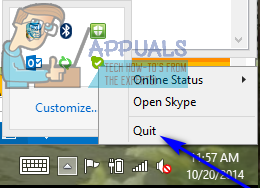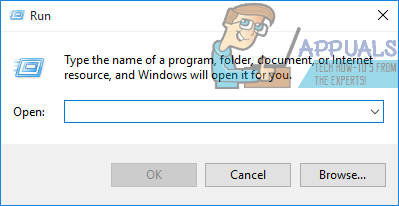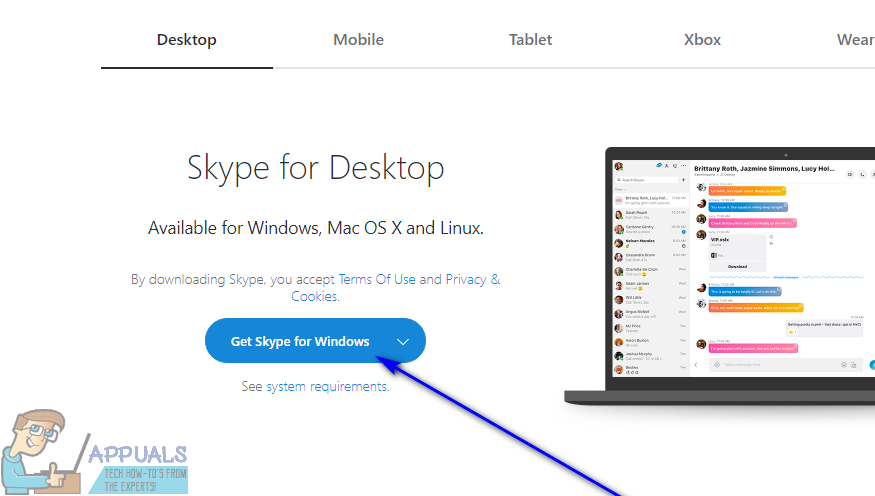Fix: Skype Stops Responding on Windows
Skype is one of the most commonly used communication applications designed for the Windows Operating System. Skype is amazingly popular in both professional and personal settings, and a large portion of all the Windows users out there have Skype installed on their computers. As is the case with all third-party applications designed for Windows, Skype is far from perfect. A common problem Skype users face on the Windows OS while using the communication platform is one where Skype simply stops responding, freezes and becomes entirely unresponsive to any and all stimuli. The only way for users affected by this problem to even close Skype once it becomes unresponsive is forcefully close it via the Task Manager.
In most cases, Skype goes unresponsive on an entirely spontaneous basis, sometimes even working for hours before exhibiting any such behavior. Skype frequently going unresponsive and having to be force closed every time can be caused by a wide array of different things, from AppData corruption to the user’s Skype history simply getting cluttered and anything in between. Skype freezing on a user while they are using it certainly is a significant problem. Thankfully, though, it is a problem that affected users can even fix on their own. However, before you move on to trying to fix this problem, you need to make sure that the version of Skype you have on your computer is the latest version available (you can find the latest available version of Skype here). The following are the most effective solutions that you can use to fix Skype if it frequently goes unresponsive during use:
Solution 1: Delete certain files from your AppData folder
- Right-click on the Skype icon in your system tray and click on Quit in the resulting context menu to close the program.

- Press the Windows Logo key + R to open a Run dialog

- Type the following into the Run dialog and press Enter:
%AppData%\skype
- Locate the folder that has the same title as your Skype username and double-click on it.
- One by one, right-click on each of the following files and folders, click on Delete and confirm the action in the resulting popup:
chatsync
media_messaging
thmanager
mmanager
- Restart your computer.
- Wait for the computer to boot up.
- Launch Skype.
- Use the application and see if, at any point during use, it goes unresponsive or spontaneously freezes.
Solution 2: Completely uninstall and then reinstall Skype
If Solution 1 doesn’t work for you, there’s a good chance you’ll have better luck with completely uninstalling Skype (including putting all of its files and folders out of commission) and reinstalling it. To completely uninstall and then reinstall Skype, you need to:
- Right-click on the Skype icon in your system tray and click on Quit in the resulting context menu to close the program.

- Press the Windows Logo key + R to open a Run dialog.

- Type the following into the Run dialog and press Enter:
%AppData%\skype
- Locate a file titled shared, right-click on it, click on Delete and confirm the action in the resulting popup.
- Locate the folder that has the same title as your Skype username and double-click on it.
- Locate a file titled config, right-click on it, click on Delete and confirm the action in the resulting popup.
- Repeat steps 2 and 3, but this time type the following into the Run dialog and press Enter:
%AppData%
- Locate the Skype folder, right-click on it, click on Rename, rename the folder to Skype_old and press Enter. Doing this achieves two things – all of your old Skype files and folders will be disregarded when you reinstall Skype and it will be as though you’re installing the program of the first time, and the old files will also be preserved so you have access to them in the event something goes wrong or you simply just need them for some reason.
- Open the Start Menu, search for “add or remove programs“, click on the search result titled Add or remove programs, locate Skype in the list of installed programs, right-click on Skype, click on Uninstall and follow the wizard all the way through to the end to uninstall the application. Once done, restart your computer.
- When the computer boots up, go here, click on Get Skype for Windows, download and run the installer, install Skype and then check to see whether or not the problem has been successfully resolved.
